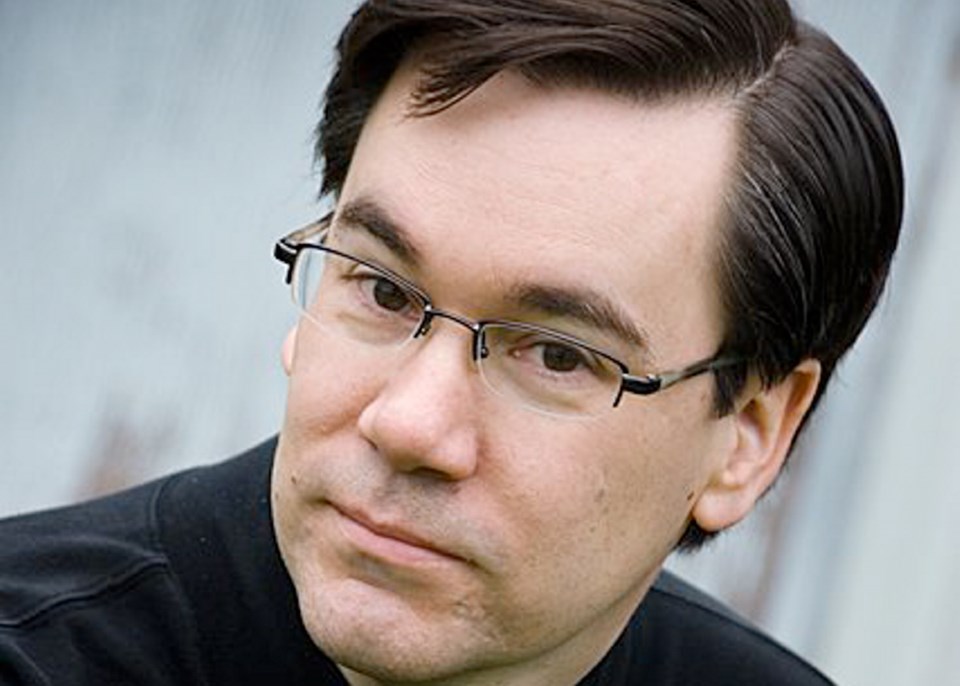The next concert at the University of Victoria’s School of Music, in its Faculty Chamber Music Series, will be a very diverse celebration of Canadian music. It will feature faculty members including soprano Anne Grimm, the Lafayette String Quartet, trumpeter Merrie Klazek, tubist Paul Beauchesne and pianist Arthur Rowe (tonight, 8 p.m., Phillip T. Young Recital Hall, by donation; streaming online at livestream.com/ somlive; uvic.ca/finearts/music).
The program opens with a fanfare for five trumpets composed in 2018 by UVic’s trombone instructor, Scott MacInnes, in honour of the 50th anniversary of the Faculty of Fine Arts, and includes other works by local composers: Leila Lustig’s Two Mosaics (2001), for voice and cello, based on a Biblical story; and slanted birds (2011), a short string-quartet piece by Anna Höstman, who earned a master’s degree at UVic and now teaches composition there.
There will be several works for brass quintet, including Morley Calvert’s popular Suite from the Monteregian Hills (1961) and Howard Cable’s Newfoundland Sketch (1978), both based on folksongs. Soprano Susan Young will perform excerpts from Ron Hannah’s Hundreds and Thousands, composed in 2001 while Hannah was based here (he now lives in Austria). The work is a tour de force, an unaccompanied one-woman chamber opera inspired by Emily Carr’s writings. (Young performed the complete hour-long opera at UVic in 2003.)
The concert will close with In a World of Motion and Distance, a piano quintet by Ottawa-based Kelly-Marie Murphy, composed especially for the Lafayette String Quartet and first performed at the Pender Harbour Chamber Music Festival in 2014.
Next spring, the Emily Carr String Quartet will perform a complete cycle of Beethoven’s quartets, in celebration of his 250th birthday. So you’d think the foursome would take the rest of the season off, retire to a windowless bunker and just practise. But they are, in fact, offering a full season, which begins Saturday morning with another instalment of their series Music: Inside Out, in which a single major work is discussed and performed, in a venue that, far from being windowless, has a splendid sea view (refreshments 10:30 a.m., concert 11, Chief and Petty Officers’ Mess, CFB Esquimalt, 1575 Lyall St., $25, students free; emilycarrstringquartet.com).
This time, the subject is Mendelssohn’s String Quartet in E Minor, Op. 44/No. 2, written in 1837 during a blissful period in his life (he had just married). The music sometimes calls to mind his Violin Concerto, which is in the same key and was begun the following year, and the middle movements suggest two of his characteristic idioms: “fairy music” in the scherzo, “song without words” in the slow movement.
(In recent years, the Emily Carr String Quartet gave several performances of Mendelssohn’s Op. 13 quartet. I described one of those performances, in 2013, as “commanding” and “ferociously intense.”)
As usual on Saturday, pianist, teacher and lecturer Robert Holliston will introduce the featured work within the context of the composer’s life and times.
Also on Saturday, the period-instrument duo comprising violinist Paul Luchkow and harpsichordist Michael Jarvis will launch their fifth season of chamber-music recitals in the intimate surroundings of Christ Church Cathedral’s Chapel of the New Jerusalem (7:30 p.m., $25, students $5; three-concert pass $60; christchurchcathedral.bc.ca).
The duo’s three concerts this season will each focus on a particular city — in this case, London. Their program once again reflects their fondness for off-the-beaten-track repertoire, including the very attractive galant music that became fashionable in the middle decades of the 18th century.
The bulk of the program comprises music of the 1730s and 1740s by English and Scottish composers, including a suite by Richard Jones, selections from two collections of “curious Scots tunes” arranged by James Oswald and harpsichord suites by Jones and William Croft.
The program is bookended with violin sonatas by distinguished foreigners who were central figures (and colleagues, and rivals) in early-18th-century London: Bononcini and Handel. The latter, of course, despite the pesky fact of his German birth, came to effectively define “Englishness” in music.
The Handel piece, incidentally, though published under his name in the early 1730s, was probably not composed by him, but it is so lovely that it has become one of “his” most popular sonatas.



